Spent a good part of the day hanging out with some of the Marvel senior staff and visiting a Marvel ex-pat whom we haven’t seen in a long, long while. Which means that I drove about 100 miles today and got up earlier than I like to do on a Saturday, and so blogging and writing in general has been a bit sparse. And yet, I still need to write up this week’s Newsletter, even though I’d much rather simply kick back and relax a bit. I keep telling myself that this isn’t a job, and so there isn’t any particular pressure to perform every week—if I missed one of these, or it was late, what would be the cost? Nothing! And yet, here I sit, pounding away at the keys. It’s a sickness, I tell you.
Oh, relating to this, the subheading this week comes from a catch-phrase that has developed among my wife and I in the sitcom that is our lives. It’s one of those things that one or the other of us will utter when faced with some task or situation that we’d rather not do. So now you’ll get it if I ever wind up using it in public.
Before we get into the Q & A portion for the week, I need to mark the passing of another giant. The great Manga-ka Leiji Matsumoto left this world to sail the eternal Sea of Stars forevermore. Matsumoto is probably best known for his creations Space Pirate Captain Harlock and Galaxy Express 999 as well as his involvement in turning Space Battleship Yamato into the juggernaut that it became in the 1970s and early 1980s. He brought a unique style to his work, with three archetypical character-types: the willowy, impossibly-thin space-woman, the squat potato-headed, beady-eyed guy (often a doctor or an inventor) and the somewhat ragged and shabby and Western-influenced young Shonen protagonist. He was also fascinated with flying, and with planes and warships and the like. Once you saw his work, you could never mistake it for that of anybody else. His technology was singular, and not so much plausible as impressionistic. And romance, always romance. Of the journey, the quest, the search for adventure and becoming and the rite of passage. He was a pioneering colossus that relatively few people are aware of on this side of the world. Fortunately, many of his most classic works have begun to be translated and imported, including the whole of his very strange, very wonderful SPACE BATTLESHIP YAMATO manga, which can be purchased here.
All right, preliminaries are over! Time to dive into your questions, begging with Ralf Haring
Speaking of the CrossGen back catalog, is there any hope of seeing even just the old comics in digital formats? Kindle, Comixology, Marvel Unlimited, etc.?
It’s not impossible, Ralf, but neither is it exceedingly likely. I don’t know that we have access to any workable reproduction materials for all of those CrossGen books, and while we could rebuild them, that requires both time and money.
Mortimer Q. Forbush:
In your opinion, what are some of the biggest misconceptions fandom holds about comics?
The big one this week is the seeming belief that they know as much or more about the industry than those of us who actually work in it, who help to run the big companies, and who get to see in minute and immediate detail just how everything works. Not a day goes by, it seems, without some article or YouTube video from some would-be pundit declaring the impending end of the medium and putting forward their rock-solid ideas for how to save it. Seriously, believe me, if there was anything legitimate to, “Put comics back in supermarkets and convenience stores” or “Make them all a lot cheaper” that actually worked, we would have all done it long ago. But that’s nostalgia talking, not a recipe for success, and it is impossible to go backwards—conditions in the world today are not what they once were in a million different ways. And so these advocations are the equivalent of concluding that the recipe for success on television would be to broadcast all of the programs in black and white again. After all, when the shows were all in black and white, they pulled in ratings the likes of which any TV producer could only dream about today. Correlation isn’t causation. The situation isn’t as simple as you’re making it out to be.
Manqueman:
Thanks for answering my questions but the answer re Ryan North’s run didn’t quite answer what I had in mind, so I’ll try again.
As I think we just saw with Savage Avengers (I presume), plans are made and then Conan’s lost and sales are weak. (I’m not at all saying there’s a connection between the two -- I wouldn’t know.) And as a result -- again surmising -- late in the game, the book gets canceled and has to be concluded.
So, North, Fantastic Four: Again presuming, I’m presuming North has a through line planned, a larger story like Aaron’s Thor and Avengers runs. So is that the case, or does he just have FF stories he wants to write? And if he does have a through line, a larger story, barring disaster, how long is he envisioned being on the book?
Well, you’re not exactly right on what went down with SECRET AVENGERS, but putting that aside for the moment, Manqueman, the answer isn’t markedly different than what I said last time. So far as I am aware, Ryan has neither a specific end point on his FANTASTIC FOUR run that he’s trying to get to, nor a clock on when he intends to cease working on the series. So this will all be determined by the performance of the book, how well he enjoys working on it and with me and the rest of the team and vice versa, and how well the audience responds to what we are doing. So we’ll all go until we decide to stop, one or more of us.
JV:
Do you generally want writers to have a through line/ending in mind when pitching a series? or is it enough to have an outline with some cool stories to tell?
Depends in part on the series, JV, but in most instances, the latter. I can’t think of many (any?) times when I brought somebody onto an ongoing series and they came in with their endpoint all worked out and a number of issues set. Other people may do that, editors and creators both, but that’s not how I tend to build regular titles. Limited series, of course, are another matter, so something like a SPIDER-MAN LIFE STORY has by its nature a limited amount of real estate to fill, and is relatively immutable.
Devin Whitlock
Thanks for another great newsletter! I read My Grandfather Was a God by Ayodele and Akande on Webtoon when you first mentioned it and I’m glad I did. Thanks for that! Are there any webcomics you’re reading right now that you enjoy?
I wish there were! But I’ve fallen away from reading webtoons at the moment, simply because there’s been so much other stuff vying for my time and attention (and, honestly, because the format means that the material will be there indefinitely, meaning there isn’t the same sort of drive to get to a new chapter right away before it is gone or gets missed. I’m still very much programmed by weekly comic shop runs and television episode-drops.) There were a bunch of things that I had been reading, but despite regular reminders in my e-mail, I haven’t gotten back to look over any of them for some time. So if other people have suggestions to give to Devin, that’d be appreciated.
Rasmus Skov Lykke
A lot of creators have talked about wishing there wasn’t solicitation texts or cover reveals available to the public, as they tend to kind of spoil the story in advance and the creators would rather people experience the story for the first time as they’re reading it.
I’m curious, how do you feel about them as an editor?
In general, I don’t like the solicitations either, Rasmus. In part, I’m sure that this is due to the fact that, when I was just a reader, there were no such things, and so you never had any idea of what might turn up at the store in a given week. And I do think that 95% of solicits today are wasted effort, that for the most part, readers and Retailers are ordering books off of a standard formula that works for them, and it’s a rare title indeed that picks up numbers with anything short of a huge story event or creative team change. But knowing the contents of the typical issue of, say, IRON MAN doesn’t change how many copies are ordered. And so, I’d love to do away with much of the process, and restore more of the story surprises to the reading experience. That said, I also know that being a Retailer is a super-tough business, and they’re the ones who most immediately have money on the line, in that they’re ordering our books on a non-returnable basis. So they are gambling on every copy ordered. And so, I see the need to provide them with the best optics possible, so that they can make the best informed buying decisions that they can, and keep everyone in business. This is much like trailers in Hollywood, where too many of them, in my opinion, give away too much about the picture they’re pimping. But the goal is to get moviegoers into seats, and so if that’s what it takes, that’s what studios are going to do. Same principle. That all said, I do think there’s something to the notion that, if you want to get people back to coming into the shops every Wednesday, then showing them the covers and giving them story synopses months in advance might not be the best move. If you had to go to the store to find out what was happening in the latest issue of, say, FANTASTIC FOUR, might that make the whole experience more appealing to you? (Of course, this wouldn’t work, because people would scan and post those covers and put them online immediately, probably before the books were even officially on sale. So forget that idea.)
Ryan M.:
Editorial question for you. I recall reading that JMS felt that Spider-Man should reveal in identity in ASM and not in the Civil War main book. His argument being that these big moments should be done the in the main book of these characters but those are the big moments that sell event books. However, when Civil War was all done and the dust had settled with Captain America arrested, he's then killed in his book in the immediate aftermath. As an editor how do you go about deciding where these big moments end up going? Spidey revealing his identity to the world has huge ramifications for the creative team on the main book. Just like Steve Rogers being dead has on his book.
Well, I was involved in the arguments and conversations in both of those cases, Ryan—and my point of view prevailed in each case, so make of that what you will. As an editor, at different times, I’ve argued either side of this issue. But I think it all comes down to the question of where the story beat most naturally belongs. Peter Parker’s unmasking was a key beat in CIVIL WAR. It was proposed by Mark Millar, and was central to his story. So I can see where an argument could be made that that beat belongs in AMAZING SPIDER-MAN—except it’s not really about the story in ASM so much as the character. That reveal was in the service of the CIVIL WAR story, and so that’s where it belonged. On the other hand, the assassination of Captain America happened after CIVIL WAR was concluded, so while that conflict created the set-up to the inciting incident, that story beat was about CAPTAIN AMERICA and the ongoing plans for that title. And so it belonged over there, rather than in CIVIL WAR. (There really wouldn’t have been any place in the end of CIVIL WAR to do it justice.)
Stephen:
Thank you for the answer on the licensed books. There’s more involved with the properties owned by the parent company than I would have guessed. As an add on to that question how do the licenses come into play on what ends up on MU? I figure Conan has to be the reason Savage Avengers is absent, since all his related books weren’t on there either. Yet other licensed books like Ultraman are on there. The new Marvelman continuation is missing as well, although issue Miracleman 0 is on there. I’m guessing this is all negotiated on a case by case basis, but how much/if at all does the ability to expand the types of offerings on MU come into play when deciding to publish a book/pursue a license.?
It’s a factor as much as anything else, Stephen, but not necessarily a deciding one. And every licensing agreement is different. For example, should our agreement with Tsuburaya expire, then I would expect that the ULTRAMAN material will come off of the service. But maybe not—it all depends on the terms of the deal and what both parties agreed to.
Rob Christie:
A number of times you have alluded to (or outright said) that poor book sales can spell the end for a particular series, which from a fiscal standpoint makes total sense. Have there been any instances where regardless of poor book sales, the creative team believed in a project so much that it was continued despite being a low earner or even a complete loss?
Probably not to the extent that you mean. There have certainly been titles over the years whose performance in the Direct Sales Market was weak but which we were creating to fulfill some other need or with an eye towards some other eventual marketplace, such as Scholastic. And we occasionally will give creators who are important to us a bit more rope simply out of respect for them and their work. But publishing titles that don’t make margin is a good way to go out of business, and it’s a truism that every creator and every editor loves and supports pretty much everything that they’re working on, and wants to see it continue. So this can become a slippery slope if you begin to make exceptions for one project or creator, in that every other project and creator is going to ask the obvious question: if them, then why not me? There’s also something of a myth around the notion of cancelling a title too quickly, as though there was some magic audience out there that was just waiting for issue #4, #8 or #12 to come out before they’d begin buying the series in staggering numbers. Here’s the thing: while it is possible for a book to find its audience as time goes by, the reality is that in most cases, a series that is failing initially is not going to begin picking up readers down the line, not unless something drastic changes. So past a certain point, you’re just throwing good money after bad, no matter how much the folks involved with it love the project.
Behind the Curtain
Since we talked about it above a little bit, here are a pair of unused cover bits for CAPTAIN AMERICA #25.
.What you see here is one of Steve Epting’s initial cover sketches for the cover to CAPTAIN AMERICA #25. it was nice enough, but not quite as impactful as what we were hoping to get. I did the doodle on the attached sticky of a slightly different concept that we also didn’t use—I think I did this after Steve’s first sketch, but it might have been before. Eventually, though, Steve hit on the idea of the close-up on Cap’s handcuffed glove atop the newspaper headline announcing his demise, which is what we went with.
And this is a cover that Bryan Hitch did for CAPTAIN AMERICA #25 back when there was some question of whether we were going to spoil the assassination ahead of time or let it be a surprise in the issue itself. In the end, the media attention was simply too attractive, and we decided that we had to tell people about what was coming ahead of time, to help pull them into stores. So this cover fell by the wayside—at one point, it was going to be a variant, but for some reason that didn’t happen. And it’s specific enough of an image that I never had another instance where Cap was in prison where I could have used it. If I’d been thinking about it, I might have run it during Ta-Nehisi Coates’ tenure, when Steve was incarcerated. Didn’t think of it, though, after so long.
Pimp My Wednesday
More books to dazzle your senses and snap you out of your ennui are on their way to a Retailer near you:
Boy, isn’t that a nice cover? Not only did artist Javier Garron (perhaps the nicest, most positive guy in comics) knock himself out by drawing a veritable army of Avengers on this final issue of the current series, but Bullpen cover designer Carlos Lao came up with the great idea of running the logo across it massive and tilted. Our Bullpen crew are really the unsung heroes of our books a lot of the time, so it’s only right that I point out Carlos’ achievement here. I think it really pops and really makes a statement. Anyway, it’s Chapter Eight of Ten of Jason Aaron’s big finale, and the cast is finally just about all assembled—just in time for all hell to break loose on them!
And that’s another cool cover, by the always-reliable Alex Ross. Iban Coello takes a break here—both so that he’ll have time to draw all of issue #7 which is Legacy #700, but also because he had a baby impending—so Ivan Fiorelli steps in to tackle this issue and the next one. It’s another very offbeat story from Ryan North in which the now-reunited foursome continue their travels to their new homestead, encounter an old foe with a grudge and a plan, and wind up dealing with a situation that can’t simply be conquered through fisticuffs. This series is magic right now, so if you haven’t poked your head in—what the heck is keeping you?
Meanwhile, it’s the all-dancing issue of MOON KNIGHT, which focused heavily on supporting cast members Reese and Soldier, though there’s the pre-requisite amount of head-bashing and rib-stomping from our multi-faced hero in white. Jed MacKay and Alessandro Cappuccio deliver another frighteningly excellent issue that works on its own but is also a part of the overarching plotline. So like with FANTASTIC FOUR, if you haven’t taken a look here, this is as good a place as any to give it a try. Bring your dancin’ shoes!
And another good cover, with a nice sense of design to it. BLOODLINE is the work of Associate Editor Annalise Bissa, and she’s done a fabulous job of shaping and guiding its development. Danny Lore and Karen Darboe take Brielle deeper into the new world that’s opened up in front of her, and the experience may be more than she can handle. Which is just when Dad shows up. Expect to see more of this character in the future.
And over in AVENGERS UNLIMITED, Alex Segura and Jim Towe wrap up their serial in which Captain America, Spider-Woman, Moon Knight and the Shroud take on Master Pandemonium for the soul of a small town in Pennsylvania.
A Comic Book On Sale 60 Years Ago Today, March 5, 1963
it’s the anniversary of two key Marvel characters today! So let’s meet them both again!
Before he was the ramrod of SHIELD, Nick Fury was a tough, no-nonsense two-fisted Sergeant in World War II, riding herd over a collection of misfit soldiers known as the Howling Commandos—the toughest unit in Able Company. SGT FURY AND HIS HOWLING COMMANDOS was a war series in the style of the FANTASTIC FOUR (as the cover blurb makes clear), stressing characterization and mayhem over realism and violence. While the book had a certain verisimilitude in these early days, it wasn’t really trying to depict the war the way it was, certainly not in the manner that artist and co-creator Jack Kirby had experienced it as an infantryman. It had more the patina of a war movie than the real thing. There are stories that have been told about Stan Lee creating the book in answer to a challenge from publisher Martin Goodman, but as far as I’ve been able to work out, there isn’t a whole lot of truth to that legend. What is true is that Goodman was interested in getting a toehold in on the war comic market again—DC was publishing five very solidly-selling war books at the time, and Goodman hadn’t put out a war title in a bit. At the same time, Kirby had tried to pitch a was series that sounded very much in this vein as a newspaper strip in the late 1950s, but nothing ever came of it. So throw all three men together, and this series was the result. Clearly Lee felt that it was closer in spirit to the new super hero titles, because he listed it in the eventual Marvel Checklist (as opposed to the western and girl books, which typically rated a mention but not a full-on entry) and he mixed it together with the other titles: a modern day Nick Fury guest-starred in FANTASTIC FOUR #21, and later, Captain America and Bucky were featured in an issue of SGT. FURY (the one and only time actual super-heroics intruded into Fury’s war world.) It was never the best-selling title in the line, but it had a respectful run of 167 issues, lasting all the way through 1981. These days, though, Fury is better remembered for his later position as the Director of Marvel’s super-spy organization SHIELD—as well as largely seen as a man of color thanks to the portrayal of Fury by Samuel L. Jackson on film and in television (which was presaged by the Ultimate Universe version of Fury, who was created in Jackson’s image.) World War II doesn’t really have the same resonance for today’s readers, but at the time this title was launched, just about everybody knew somebody who had fought in the conflict twenty years before, if they hadn’t done so themselves.
Another Comic Book On Sale 60 Years Ago Today, March 5, 1963
The Wasp also made her debut on this date, turning up as Ant-Man’s new partner in TALES TO ASTONISH #44 by Stan Lee, Robert Bernstein, Jack Kirby and Don Heck. And there was only one reason for her creation: the Ant-Man strip was lagging in sales. A number of the early Marvel super hero strips struggled to find their identities and were retooled in ways small and large in an attempt to attract reader attention and interest. Supposedly, Marvel’s owner Martin Goodman had a good feeling about Ant-Man, in part based on the strong sales posted by THE ATOM over at DC. So Stan and company kept revising Hank Pym, giving him new powers and new costumes and new identities before eventually throwing in the towel after several years and letting Namor the Sub-Mariner have his slot in the magazine. But adding the Wasp to give the strip some sex appeal and give Ant-Man somebody to talk to was the first attempt to jazz it up. And it worked to a certain degree. While the Wasp was often portrayed as something of a ditz, she was definitely more bubbly and animated than stuffy Hank Pym, and so she brought some life to the series. But she also had a tendency to suffer from “Stan Lee Female” syndrome—Stan tended to want his heroines to not be all that powerful or competent, to largely be cheering sections for the men. And so, Janet Van Dyne often had to work from the back of the room, never quite allowed to eclipse her male partner even though her powers, at least initially, were greater than his own. In this first story, too, there’s a bit of a May-December thing going on between Hank and Jan, in which the Wasp is attracted to her new partner despite their age difference, which isn’t insignificant. This tended to get glossed over in later issues, and the pair was often depicted as feeling closer in age than was initially established. She was only the second super-heroine introduced in the Marvel Age, preceded only by Sue Storm, the Invisible Girl.
A Comic Book On Sale 55 Years Ago Today, March 5, 1968
More than anything, touching on this book isn’t much more than an excuse to give you this link, as I wrote about it only a week or two ago. This was the first story that longtime FLASH writer Cary Bates ever sold to the series and its editor Julie Schwartz—and it involved Julie himself as a character! You see, building off of the ideas presented in the earlier “Flash of Two Worlds” story in which Barry Allen vibrated across the dimensional divide to meet DC’s earlier Flash Jay Garrick, who lived on the parallel world of Earth-2, Cary reckoned that if those worlds existed, then so too must the Earth on which the comics are produced. He and Schwartz ultimately named this world, our world, Earth-Prime, and this was the story that introduced it. While battling an alien creature that is attracted to his speed aura, Barry Allen finds himself zapped into an unfamiliar universe—one in which a young fan brings him a recent issue of the comic to autograph. Realizing that he needs help to return home and figuring that there are relatively few people who would believe his wild story even with him being able to demonstrate his super-speed to them, Barry seeks out Julie Schwartz at the DC offices and prevails upon him to purchase all of the components that Barry will need to construct a cosmic treadmill that he can use to get home. As I mentioned in the write-up, the idea that a comic book editor could afford all of those electronics and gear on his salary is perhaps the most unbelievable part of the entire adventure. Earth-Prime became a regular locale in the DC Universe, and there must have been around a dozen stories that revisited it in some way before CRISIS ON INFINITE EARTHS did away with the multiple worlds conceit (and even then, later writers would still find ways to invoke it.)
A Comic I Worked On That Came Out On This Date
THE UNTOLD LEGEND OF CAPTAIN MARVEL was one of the last things I wrote for Marvel, and one of the best. The first issue came out on March 5, 1997, and it was something of an odd duck even then. Really, there wasn’t a whole lot of interest in Mar-Vell in the marketplace at the time—and any that did exist was focused entirely on his later more cosmic incarnation with the red and blue costume. But Editor in Chief Bob Harras had a nostalgic soft spot for this version of the character for some reason likely having to do with when he first encountered Mar-Vell as a reader. So at a planning session for the new year, Bob tossed out the idea of doing a limited series featuring the early green-and-white Captain Marvel. When absolutely nobody jumped up with any enthusiasm—seriously, the room went dead quiet, as nobody wanted to take this series on—I sheepishly volunteered to write it along with my partner Mike Kanterovich. Mike and I worked out the overall plot for the series, which had to get approved and which consequently skewed a bit more X-MEN-centric than I might have liked (though it was still better than most of our initial ideas, which were much more focused on later elements such as Thanos). But Mike wound up having a family emergency that sidelined him for several months, which meant that I wound up doing most of the plotting and scripting entirely on my own. Fortunately, I had a good editor to support me in these efforts. Mark Bernardo, who got the title pretty much the same way I had, because nobody else really wanted it, was extremely helpful to the process and gave me some very useful feedback on things that weren’t working that helped me to make it better. In particular, he diagnosed the problem with the structure of the second issue and suggested the change to the ending that made it all work. So he was terrific. Also terrific was artist Scott Kolins, whom I had known a little bit when he had been on staff as one of John Romita’s Raiders, the team of apprentices who did art corrections. Scott hadn’t quite entirely come into his own, as he would a few years later while working with Geoff Johns on THE FLASH, but he still had plenty of raw talent and enthusiasm for the right sorts of comics. In thinking about the character and the story, I realized that what we were doing wasn’t a super hero comic book at all. It was a war comic, albeit a war comic set in space, and so I began reading as much war material as I could get my hands in, in particular Harvey Kurtzman’s fantastic EC war titles TWO FISTED TALES and FRONTLINE COMBAT. The Mark Waid and Ron Garney run on CAPTAIN AMERICA was also a strong influence—in my mind, Mar-Vell was akin to the Captain America of the Kree, and so any action sequences I plotted I envisioned in Garney’s style. I haven’t looked back at it in forever, and I’m sure that today I’d see all of the janky bit and the stuff where my influences show through a bit too much. But I remember being quite happy with how the series turned out. Of course, it didn’t sell especially well—nobody was really interested in this version of the character regardless, remember? And it’s never been reprinted, though it’s possible that one day we’ll get around to it in one collection or another. So it remains a little hidden gem in my back catalog.
Monofocus
Springboarding off of all of the classic DOCTOR WHO that I’d been watching in preparation for Russell T. Davies return as showrunner, I pulled out my copy of DOCTOR WHO: THE WRITER’S TALE for a reread—the hardcover printing, which included Russell’s scripts in bits as he wrote them, rather than the later softcover which covered more time but which had to cut the scripts for space as a result. It isn’t quite a behind-the-scenes book nor a how-to book in terms of writing, yet I found it about the most useful such tome on such subjects. The entire text is a set of intimate text messages between Russell and his friend journalist Benjamin Cook, who is covering DOCTOR WHO. This all plays out while Russell is in the process of writing his last full season as showrunner, as well as dealing with the myriad of other tasks that he faces in that role—including lining up his successor. While I had kind of gotten along editorially through a sort of developed instinct over time, this was the book that articulated to me in terms that I could understand and embrace just what the job of a writer and storyteller was all about, and how to focus on the proper and important aspects of a story. Plus, of course, there are plenty of DOCTOR WHO anecdotes along the way. It’s also a relatively warts-and-all volume, as at least it doesn’t seem as though Russell is at any point shaving down his more prickly points to make himself look better. You get a very clear sense of his anxiety facing down a blank page and the assortment of demons he must battle each time in order to pull a script together. It’s a really great read (although, obviously, it all works a whole lot better if you’re a fan of DOCTOR WHO and are familiar with the episodes in question.) The volume is unfortunately out of print—only the later revised edition is still available. But it’s easy enough to find on eBay. Look! Here’s a link to a copy now!
I also checked out the third season opener of THE MANDALORIAN, which I thought was fine. I do understand that some people were disappointed by it, both because it didn’t measure up to ANDOR in their eyes and in that it pretty much reset the status quo of the series to square one in a bit of an unrealistic way. Maybe it’s because my investment here has always been a bit surface-level (though my mother is bananas for this show, and for Grogu in particular. The whole reason I signed up for Disney+ in the first place was that she wanted to watch the first season finale when it dropped while she was visiting,) but I thought it was fine. I didn’t mind the shorter length—if anything, I appreciated it not dragging on intermittently. And i thought it all looked good and evoked that same western-in-space flavor that made the first two years so appealing. So I’m on board for another year, I think.
Over on video, I wound up getting sucked into the YouTube channel of Nerdwriter thanks in particular to this great video in which he re-edits the Chris Pratt/Jennifer Lawrence movie PASSENGERS to increase its drama and effectiveness. It’s a tiny little master class in storytelling right there, and while his reworking doesn’t solve absolutely every problem in the film, his edit does make it about ten times more effective than the finished movie. Now, that’s good editing. He does other videos on a myriad of diverse subjects, only a few of which I’ve watched as of this writing. But I did order his book of essays, so expect to hear about that in the near future once I’ve cracked it.
Posted at TomBrevoort.com
As I mentioned at the top, I didn’t have a chance to write anything new for the website earlier today. But last week I did talk about this vintage issue of JOURNEY INTO MYSTERY by Stan Lee and Jack Kirby, starring Thor:
And five years ago, I wrote about this issue of WORLD’S FINEST COMICS that finishes up a storyline from another series using a different writer. Always a recipe for good comics…
Well, to quote Stuart Smalley, I don’t think this was my best show. But, hey, we got through it, right? And there’s nowhere to go but up! So take care of yourselves for another week and I’ll see you most likely next Sunday!
Tom B

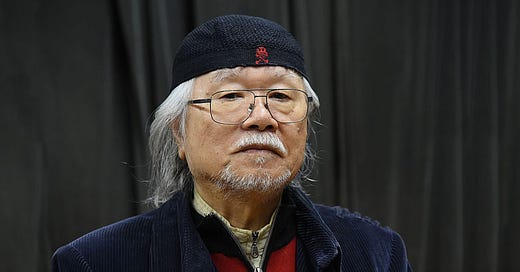




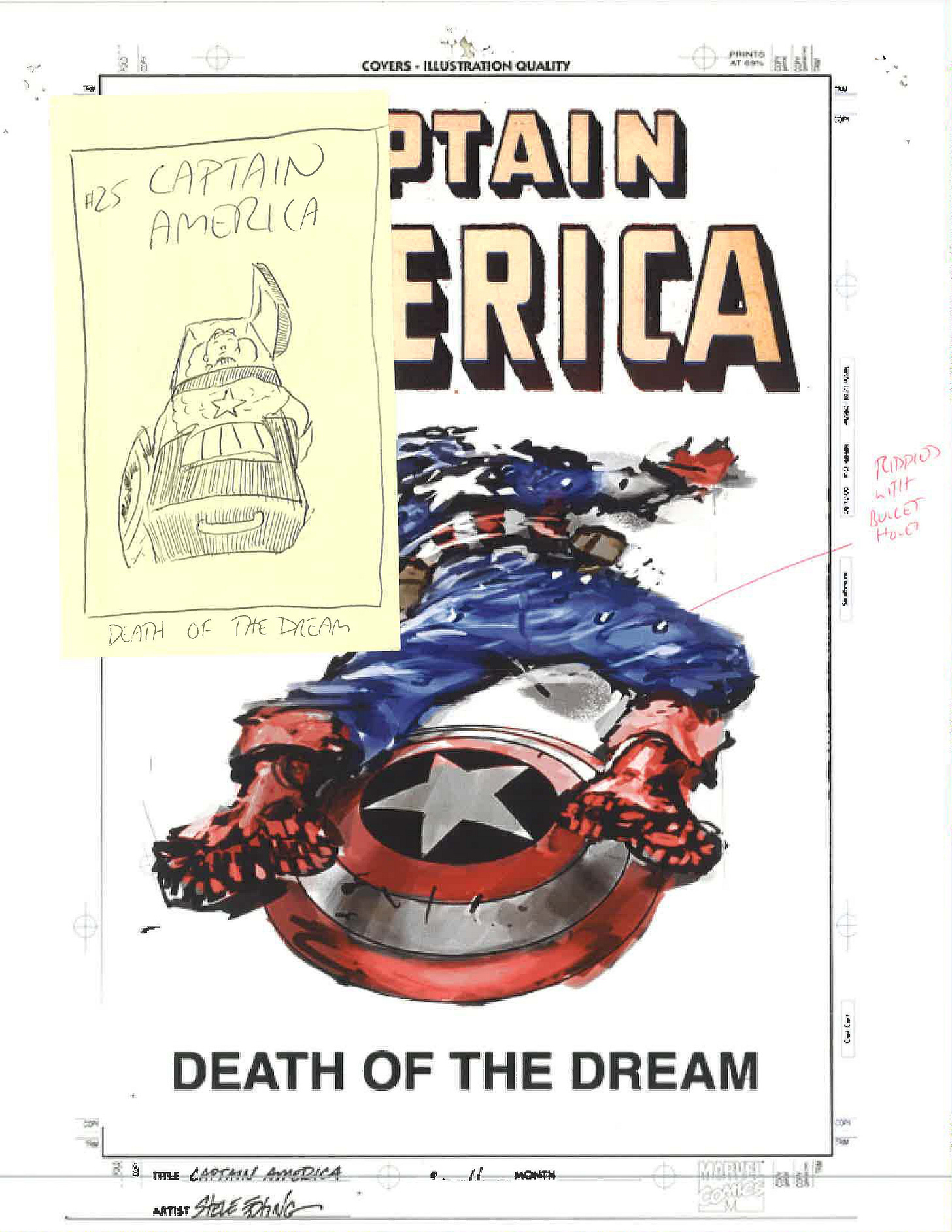

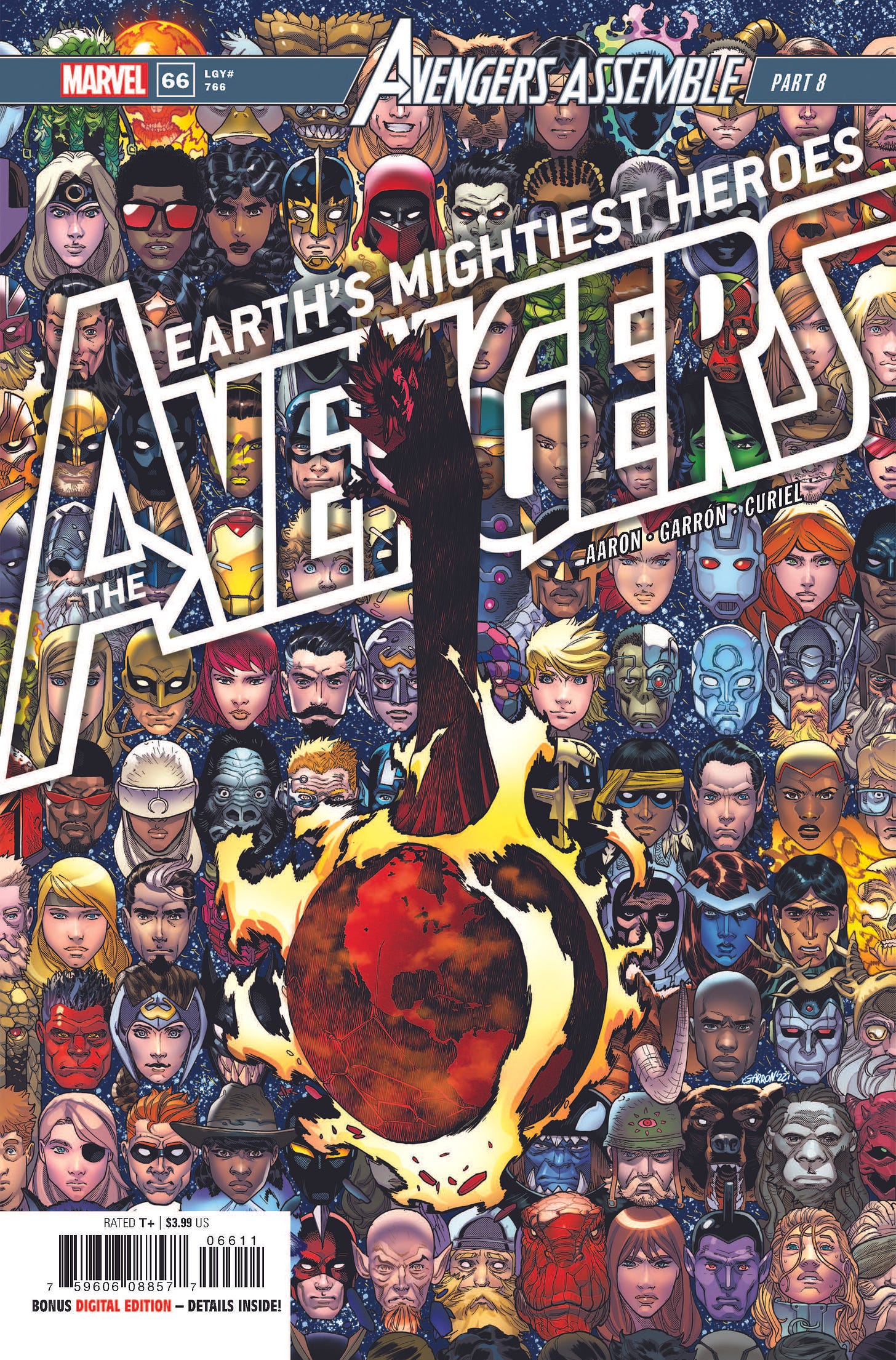


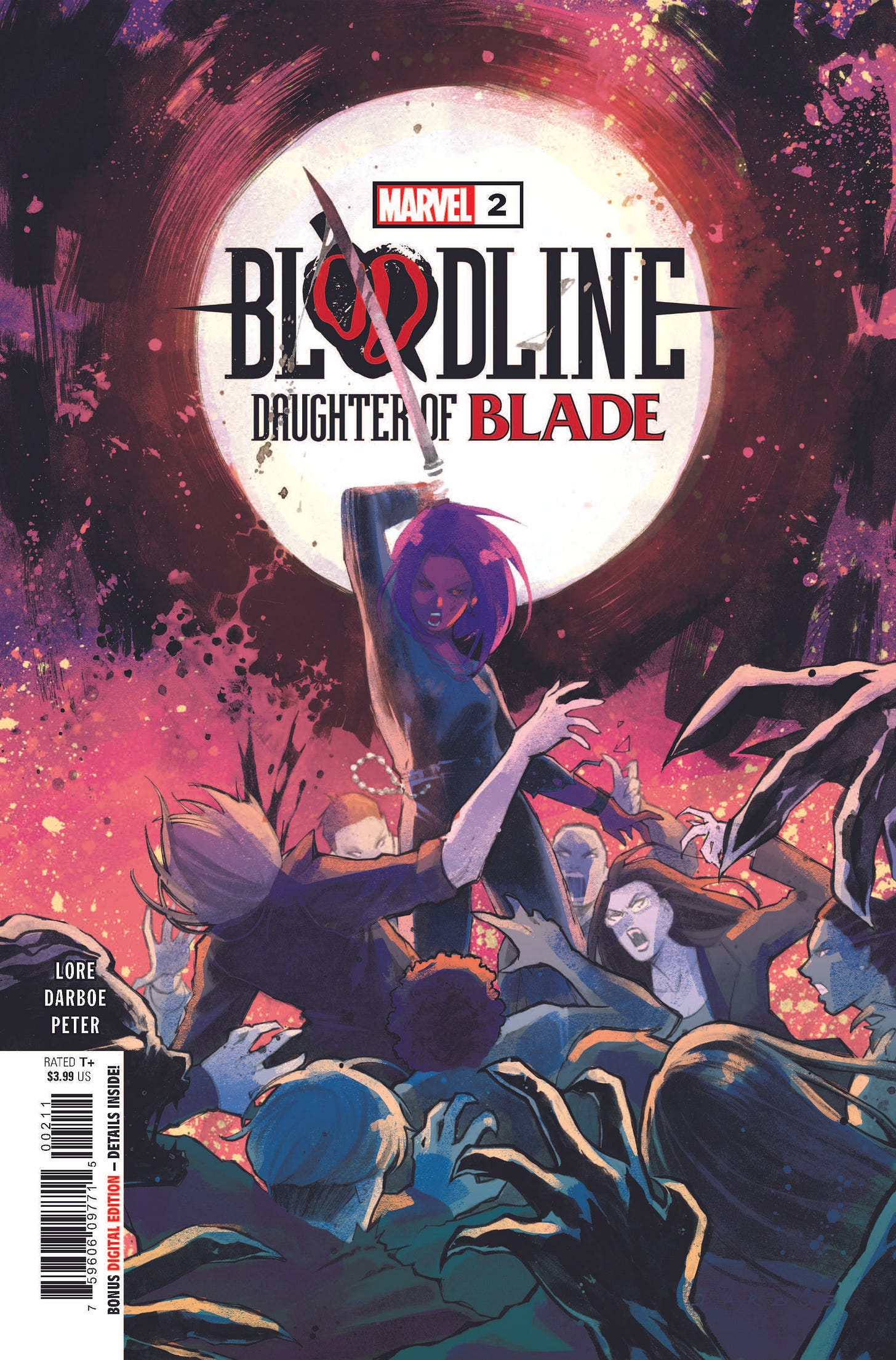


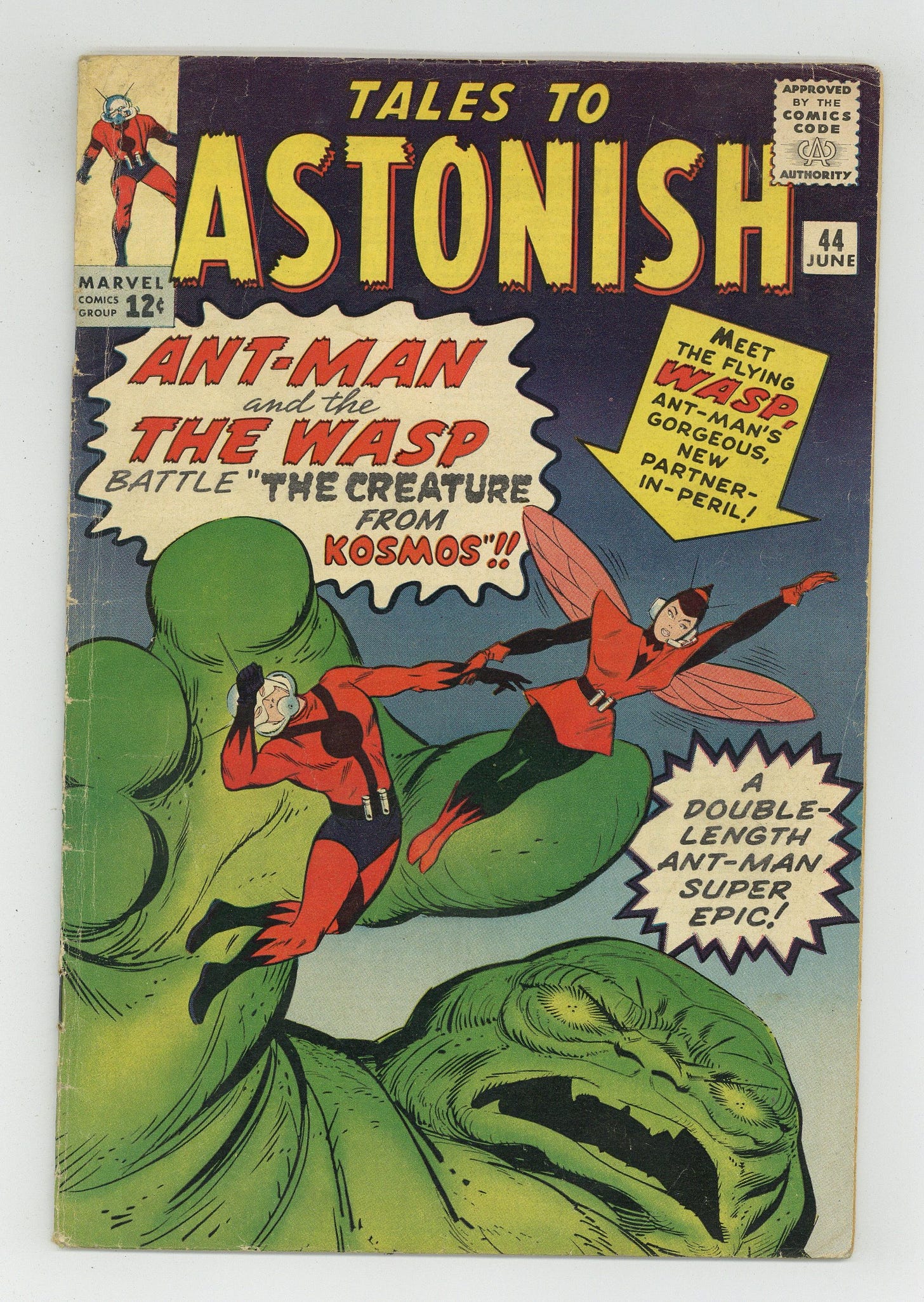
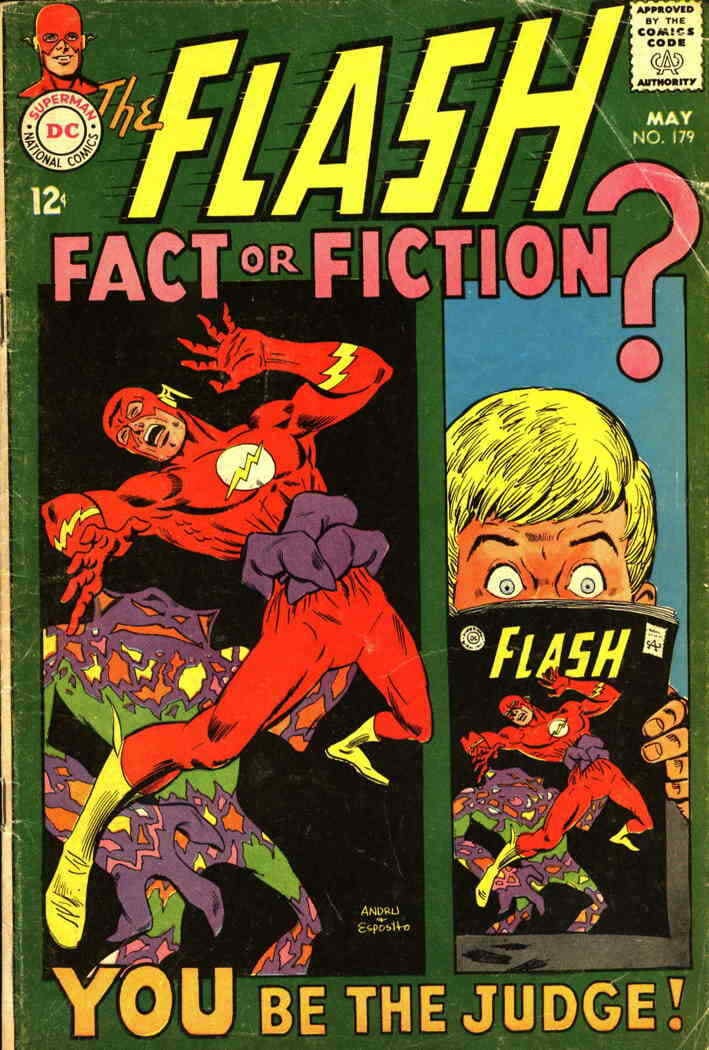
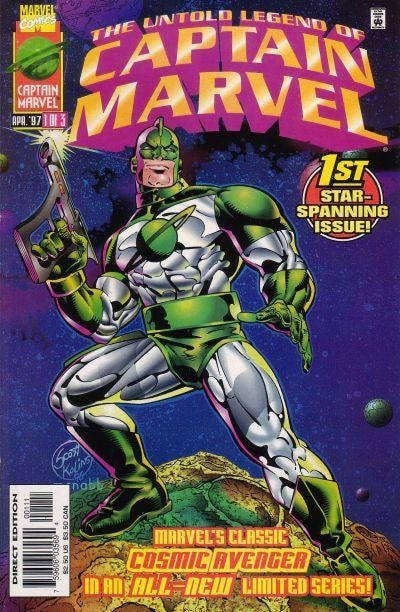

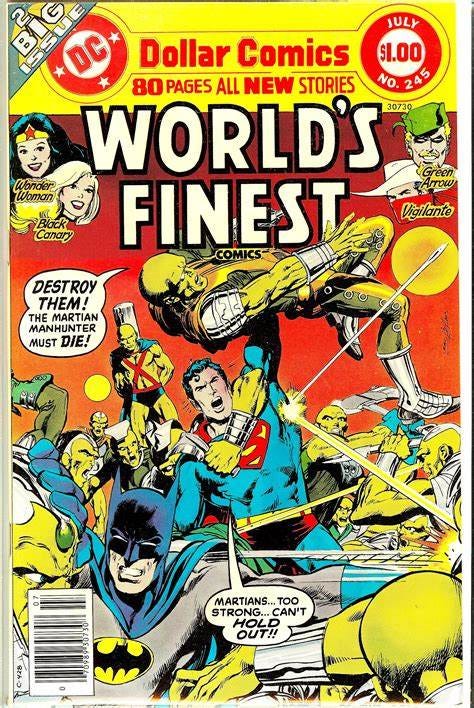
move over "for sale: baby shoes, never worn" there's an even SHORTER saddest story!
"bryan hitch cover never used"
I don't have a question. I just wanted to make sure you knew your dedication to this newsletter is appreciated.